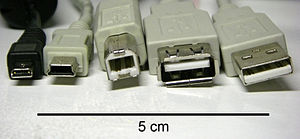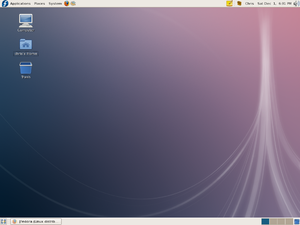
- Image via CrunchBase
We plan to offer more thoughts later, as we will be doing some field-testing. We have installed Fedora 11, code named Leonidas on a MSI Wind U100 netbook which we will be taking with us on a trip this weekend, allowing us to explore it before rolling it out to other systems.
Our initial impressions are that F11 is a winner. It has been cleaned up at every level. We installed it from scratch and proceeded to install everything we routinely use on a mobile system, including Firefox(with Xmarks, formerly Foxmarks to store our bookmarks), Dropbox for our Documents and some configuration files, and Adobe Air so we can run our Twitter client. There was a problem with Adobe Air, but a quick net search found us the solution(a symbolic link so Air could find a library). The whole process took very little time.
Plymouth, Fedora’s graphical boot loader, now supports Intel based graphics cards, which are found in a majority of productivity based notebooks and netbooks. Since our previous systems didn’t support it by default, and we saw no need to override that, this is the first time we’ve seen the graphical loader outside of one try. Plymouth is plug-in capable for different boot screens. The default one is merely a circle that gradually fills in until it is complete. We’ll have to take a look at the alternatives there as well.On the other hand, it is a boot screen. We don’t want to spend too much time looking at it, especially if it slows things down to render something fancier.
Fedora also has changed the default volume group name to include the hostname…a minor touch, and the ext4 file system. Anaconda, the Fedora installer, continues to be fairly user-friendly. Fedora has rebuilt many areas of the program, but the feel is pretty much the same for installation.
Into the OS itself, Fedora 11 had a goal of a 20-second boot time. It isn’t quite achieved on a netbook, but it came fairly close. The netbook is the only system we use that doesn’t support the 64-bit architecture, so we used the 32-bit, which has now been rebased as i586 instead of i386 We also enabled Presto to reduce update sizes. On our first update, we had a 91% download savings with no noticeable problems.
The new versions of Gnome and Firefox look subtly different, but we haven’t had a chance to experiment with them yet, beyond configuring things the way we want them. We will report back on this.
Finally, as this is a mobile computer, Fedora 11 boasts new power saving measures, including an update to the handling of relatime backkported from the 2.6.30 kernel, which was just released, but after the Fedora 11 release. We look forward to seeing how these power measures enhance battery life.
So, in the end…Fedora, better than ever, no show-stopping problems we’ve seen so far…and more to come.
Related articles by Zemanta
- Fedora 11 packs a next-gen file system, faster boot times, all the joys and pitfalls of #linux (engadget.com)
- Fedora 11 leaps into filesystem unknown (theregister.co.uk)
- Red Hat goes one louder with Fedora 11 (theregister.co.uk)

![Reblog this post [with Zemanta]](http://img.zemanta.com/reblog_e.png?x-id=08b345df-eba7-4383-9e84-f702ddc55f23)
![Reblog this post [with Zemanta]](http://img.zemanta.com/reblog_e.png?x-id=7e072992-a120-4781-8f83-cf3e1ecb9ade)


![Reblog this post [with Zemanta]](http://img.zemanta.com/reblog_e.png?x-id=4a1a6b9b-aba3-437a-89ff-7e542ea7c9d1)


![Reblog this post [with Zemanta]](http://img.zemanta.com/reblog_e.png?x-id=5bb0bc46-6cd6-48a7-8d5d-ea2b32592c64)


![Reblog this post [with Zemanta]](http://img.zemanta.com/reblog_e.png?x-id=f627cef1-a229-4446-8a81-a67cfaaefd82)


![Reblog this post [with Zemanta]](http://img.zemanta.com/reblog_e.png?x-id=e5f40a83-e283-460d-9483-d2ef776b2077)


![Reblog this post [with Zemanta]](http://img.zemanta.com/reblog_e.png?x-id=702fbfeb-2eaf-4e42-ae89-8ffee00bbd14)


![Reblog this post [with Zemanta]](http://img.zemanta.com/reblog_e.png?x-id=d255759e-37b8-4f7e-8715-256f615b7c07)

![Reblog this post [with Zemanta]](http://img.zemanta.com/reblog_e.png?x-id=163d8f52-9e90-4c9a-8c7b-bea2ee375b7a)

![Reblog this post [with Zemanta]](http://img.zemanta.com/reblog_e.png?x-id=79327adc-7711-4d92-afd9-3cff096c45fd)